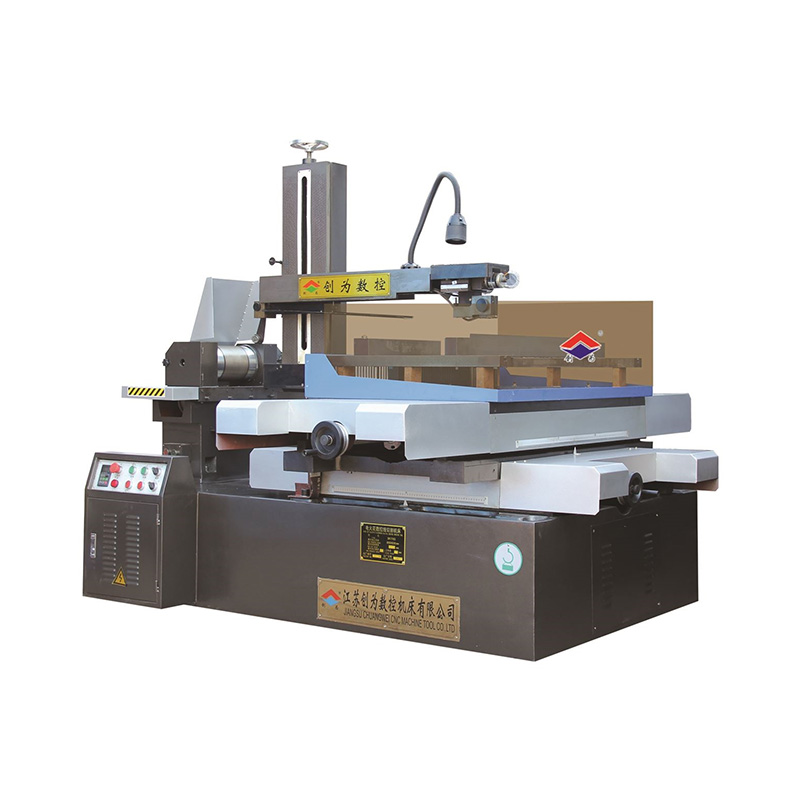What are the technical characteristics and application fields of high-speed wire cutting?
 2025.02.20
2025.02.20
 Industry news
Industry news
In modern manufacturing, high-precision and high-efficiency processing technology is an important driving force for industrial development. As an advanced EDM technology, high-speed wire cutting has become one of the core processes in mold manufacturing, aerospace, automotive industry and other fields with its excellent precision and flexibility.
High-speed wire cutting equipment is mainly composed of CNC system, workbench, wire guide mechanism and power supply. Through computer control, it can realize the automated processing of parts with complex shapes while maintaining extremely high dimensional accuracy and surface quality.
Technical characteristics of high-speed wire cutting
Ultra-high precision
High-speed wire cutting can achieve micron-level processing accuracy, which is particularly suitable for manufacturing high-precision molds, precision parts and complex geometric shapes. Its cutting path is completely controlled by CNC program, ensuring the consistency and repeatability of processing.

Non-contact processing
Since there is no direct contact between the electrode wire and the workpiece, no mechanical stress or deformation will be generated. This non-contact processing method is particularly suitable for processing thin-walled parts or fragile materials.
Wide range of applications
High-speed wire cutting can process almost any conductive material, regardless of hardness. From ordinary steel to super-hard materials (such as tungsten steel and ceramic coating materials), it can be easily handled.
High efficiency and energy saving
Modern high-speed wire cutting equipment adopts advanced pulse power supply and intelligent control system, which can significantly improve efficiency and reduce energy consumption while ensuring processing quality.
Diversified functions
High-speed wire cutting can not only complete two-dimensional plane cutting, but also realize three-dimensional surface processing through multi-axis linkage to meet the manufacturing needs of complex parts.
Application fields of high-speed wire cutting
Mold manufacturing
In the mold industry, high-speed wire cutting is widely used to process stamping molds, injection molds and stretching molds. Its high precision and complex shape processing capabilities greatly improve the service life and performance of the mold.
Aerospace
The aerospace field has extremely high requirements for the precision and reliability of parts, and high-speed wire cutting can meet these demanding requirements. For example, the processing of complex structures such as turbine blades and engine parts cannot be separated from this technology.
Automotive industry
A large number of high-strength and high-hardness materials are required in automobile manufacturing, and high-speed wire cutting can easily cope with the processing tasks of these materials. In addition, it is also used to produce automotive interior molds, body stamping parts, etc.
Medical Devices
The medical device industry has extremely high requirements for product precision and hygiene standards. High-speed wire cutting can process small parts that meet medical-grade standards, such as surgical instruments, dental tools, etc.
Electronics and Communications
High-speed wire cutting also plays an important role in the electronics industry, such as processing circuit board molds, semiconductor packaging molds, etc. Its micron-level processing accuracy ensures the high performance and stability of electronic products.
Future Development Trends of High-speed Wire Cutting
With the advent of the Industrial 4.0 era, high-speed wire cutting technology is moving towards a more intelligent and automated direction. Here are several major trends:
Intelligent Control
With the help of artificial intelligence and big data technology, future high-speed wire cutting equipment will have the ability to self-learn and optimize, and can automatically adjust parameters according to different processing tasks to further improve efficiency and accuracy.
Green Manufacturing
The increase in environmental awareness has prompted high-speed wire cutting technology to move towards a more energy-saving and environmentally friendly direction. For example, measures such as developing low-loss electrode wires and reducing the use of coolant are being gradually promoted.
Compound Processing
Combining high-speed wire cutting with other processing technologies (such as laser processing and ultrasonic processing) to form a composite processing center to meet more diverse needs.
Micro-processing
With the development of micro-electromechanical systems (MEMS) and nanotechnology, high-speed wire cutting has broad application prospects in micro-parts processing. In the future, this technology is expected to break through the existing limits and achieve higher-precision processing.
With its high precision, high efficiency and wide applicability, high-speed wire cutting has become an indispensable part of modern manufacturing. Whether in traditional industries or emerging fields, it is constantly promoting technological innovation and industrial upgrading. In the future, with the further development of technology, high-speed wire cutting will continue to expand its application boundaries and inject new vitality into the global manufacturing industry.


 English
English Español
Español










